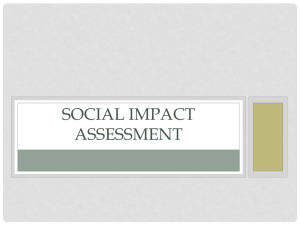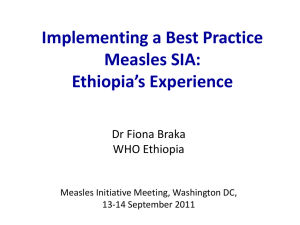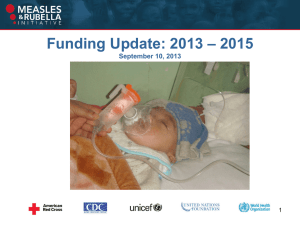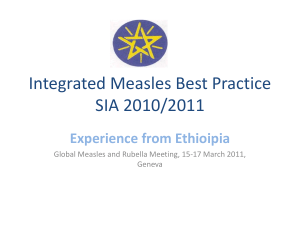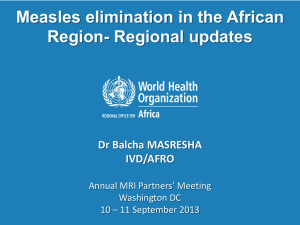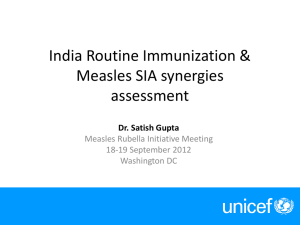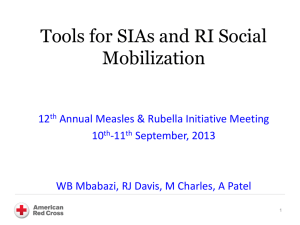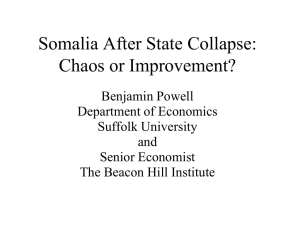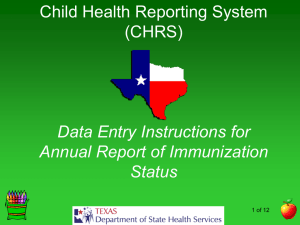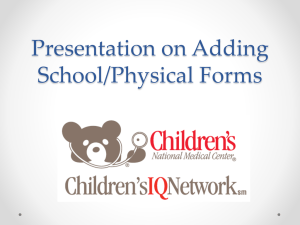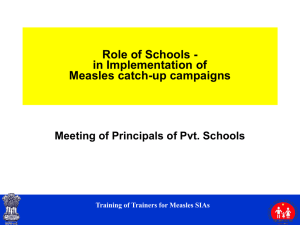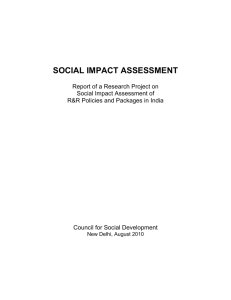Using Measles SIAs to Strengthen Routine Immunization
advertisement
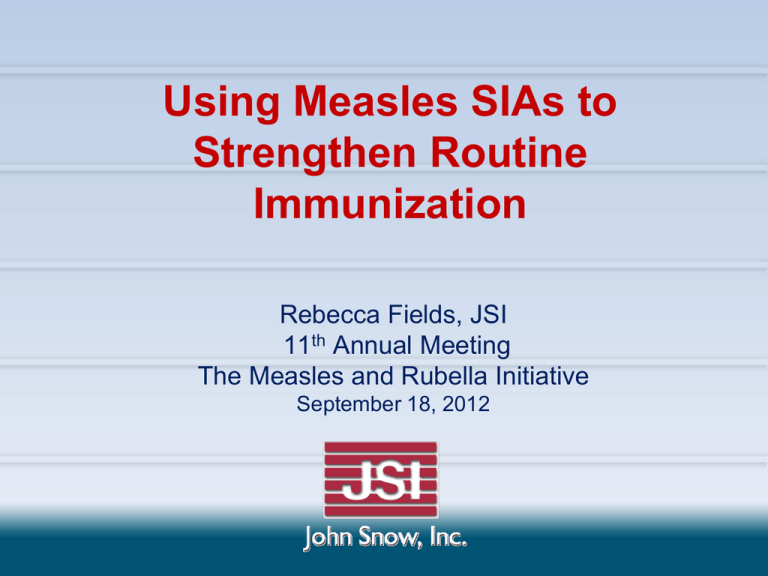
Using Measles SIAs to Strengthen Routine Immunization Rebecca Fields, JSI 11th Annual Meeting The Measles and Rubella Initiative September 18, 2012 Extensive previous and recent work on SIAs and health/immunization systems “Disease Taylor Commission: Effects of PEI on health systems 1994 1996 Jharkhand study (NPSP/ CDC) Eradication: Friend or Foe to the Health System” 1998 Checklist to optimize impact of PEI on RI 2000 2002 2004 2006 UNF/ Red Cross Meeting 2008 Impact of measles elimination on health systems (LSHTM) 2010 Nepal SIAs – WHO/ CDC 2012 Ethiopia: Implementing Best Practice SIAs Many SIAs in countries with MCV1 < 80% and weaker health/immunization systems MCV1 coverage, 2011 SIAs completed and planned, 2010-2013 Using Measles Activities to Strengthen Immunization and Surveillance: Objectives 1. Develop guidelines for countries on planning and implementing SIAs in ways that deliberately strengthen routine immunization and surveillance 2. Propose indicators to monitor and help manage such efforts 3. Develop prototype advocacy materials to promote measles control as a fundamental part of immunization system strengthening Field work to inform development of guidance for countries • Countries selected based on anticipated SIAs, routine immunization coverage, geographic variation – Lao PDR – August 2011 – Bihar State, India – December 2011 • Approximately 2 weeks of field work – National level: interviews and data review – Districts: visits to 4 districts/country; high/low RI performance; urban/rural – Facilities: >4 facilities to elicit health worker perspectives • Field work supplemented with interviews and reviews of experiences in Ethiopia, Jharkhand, Nepal, other countries in Africa Subset of large menu of possible activities Program area Possible activities When? Before/ During/After SIA • Build planning for RI strengthening into all phases of SIA planning (e.g. workshops, tools) Before • Use SIA head counts to revise target population for RI microplans After • Use information on costs of reaching hard to reach during SIAs to revise RI budgets After Training & supervision • Conduct needs assessment and include key topics to reinforce routine immunization skills in SIA training Before Monitoring and evaluation • Use findings from SIA supervision checklists to correct deficiencies for RI After • Apply findings from RCAs on source of information to RI communication strategies After Planning Possible activities (continued) Program Area Communication/ social mobilization/ advocacy Possible Activities When? Before/ During/After SIA • Provide key messages to caregivers on need to return for RI and when (if possible) During • Foster strong relationship with media for accurate, supportive coverage of RI After • Provide feedback to local community and political leaders on SIAs and RI During/ After Vaccine supply management • Post-SIA, physically inventory and redistribute vaccine stocks Cold chain/ Logistics • Update inventory, distribute new equipment for SIA and RI needs • Use data on CCL problems identified during SIA as basis to correct for RI After • In SIA training, reinforce skills on measles case detection and reporting Before Surveillance After Before Process outlined in country guidance module 1. Communicate and advocate for RI strengthening as an integral component of a “Best Practice SIA.” 2. Assign clear responsibilities: before/during/after SIAs 3. Identify challenges to RI that SIAs can help address 4. Prioritize certain activities to strengthen RI and avert negative impact based on feasibility, potential contribution, resources needed 5. Plan and budget for RI strengthening activities: include in SIA guidelines 6. Monitor and evaluate to build accountability for this component of SIA Features of module for countries • • • • • Checklist to aid planning Extensive menu of potential activities “Scorecard” to help prioritize activities Support for advocacy Illustrative indicators and monitoring approach • Suggested format for post-SIA review meeting on using SIA to strengthen routine immunization and surveillance Global-level indicators: characteristics K. Feldon • Limited to 1-2 to avoid imposing burden • Broadly applicable across countries • Easy to collect and report • Meaningful; show connection between SIAs and RI • Avoid creating unrealistic expectations about what SIAs will do for RI Indicators: Combine broad and specific Broad: to gauge global and regional progress AND Country plan, prepared and funded using SIA resources, to strengthen and monitor routine immunization performance. OR Structures to coordinate SIAs and RI at national and subnational levels are established and functional before, during, and after SIAs. Specific: to describe country priorities At least one indicator describing a program area a country selects for using SIAs to strengthen RI K. Feldon What will it take to implement such activities? A menu of ideas is not enough Political will on part of governments and partners: RI strengthening needs to be deliberate part of highlevel advocacy and language for describing the SIA Budget: Limited but assured. Needed to secure attention and commitment. Assignment of responsibilities: coordinating structures at different levels responsible for the SIA/RI interface: functional before and after the SIA Human resources Timeframe Why use SIAs to strengthen routine immunization? Routine immunization is essential to achieving high levels of population immunity Prominent addition to the Global Measles Rubella Strategic Plan Guiding Principles Milestones Performance indicators Adding this component incurs marginal costs but can lead to specific, lasting improvements in RI, thereby helping achieve elimination target SIAs may be viewed as more central to other efforts and partners: NVI, developmental bilaterals, etc. Thank you E. Simons
